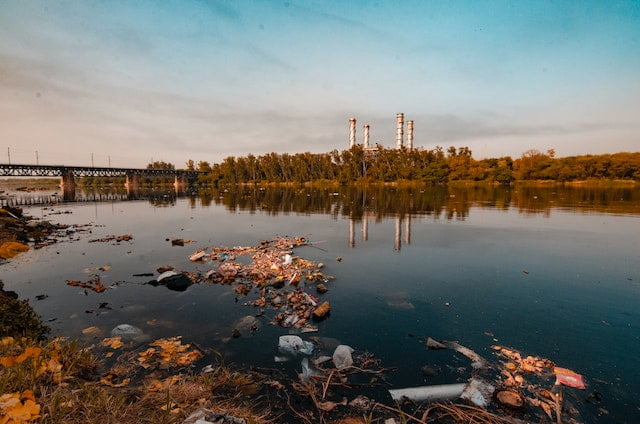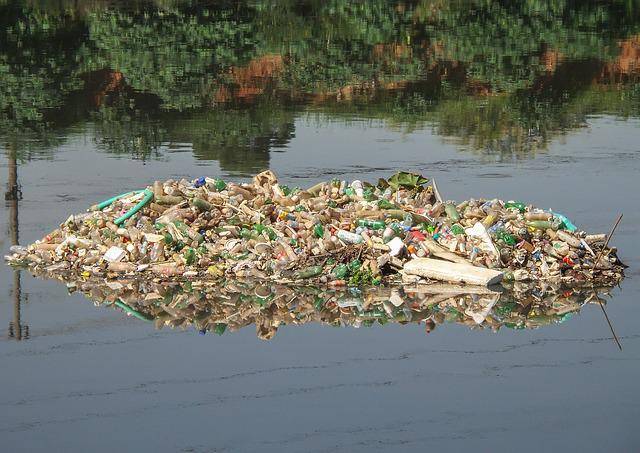
The river is a natural plug flow type of bioreactor for the remediation of various pollutants. In addition to biological activities, physical-chemical processes play a crucial role in the fate of pollutants in the river ecosystem. However, the extent of remediation depends on various factors and limits the self-purification process. At the same time, not all man-made pollutants are degradable under natural decomposition in river ecosystems such as plastics. The self-cleaning potential of the river is a function of time and distance traveled. The pollutants get piled up if the rate of addition of pollutants is faster than the rate of their decomposition.
Sources of river pollution
Rivers are prone to pollution due to solid waste disposal, agricultural runoff, and wastewater discharge. These sources can be grouped into industrial, urban, agricultural, and natural. Agricultural water pollution is caused by fertilizers, insecticides, pesticides, farm animal wastes, and sediments. The pathogenic organisms of these wastes transmit to the water and pose serious problems. On the other hand, natural pollution often arises from storm wash, swamp drainage, and aquatic life in the stream. Storm wash usually carries large quantities of organic matter and inorganic silt from soil erosion into water streams. The natural elements which cause water pollution are gases, soil, minerals, humus, and waste created by organisms present in water. During rain, surface water with soil, mud, and humus enter into streams.
Self-purification process of river water
The self-purification of river water is a complex process that often involved physical, chemical, and biological processes working simultaneously. The processes that affect self-purification are dilution, sedimentation, oxidation, exchange of volatile substances, and the release of gaseous products.
The dissolved oxygen level is always available in rivers since there is a sufficient amount of water for dilution. However, the amount of dissolved oxygen limits the self-purification process. In addition, temperature and sunlight can be other factors that affect self-purification. It is a given fact that nutrients including dissolved oxygen is more present in cold temperatures. Self-purification can occur more in cold temperatures rather than in hotter conditions. On the other hand, sunlight facilitates photosynthesis by algae that add more oxygen to the stream, thus leading to more self-purification.

Limitations of biological activities
Biodegradation and/or biotransformation of contaminates by natural microorganisms play a primary role in environmental fate and transport under natural conditions. In most cases, microorganisms break chemical bonds and transfer electrons from the contaminants to an electron acceptor, such as oxygen to gain energy that allows them to grow and reproduce. The organic contaminants act as a source of carbon and energy for degrading microorganisms in the river. In some cases, co-metabolite is necessary to support their growth to degrade/transform the contaminant since it cannot serve as the primary energy source for the organisms.
Contaminants including hydrocarbons and derivatives such as gasoline, fuel oil, polycyclic aromatic hydrocarbons, creosote, alcohols, ketones, esters, phthalate, ethers, halogenated hydrocarbons, polychlorinated biphenyls, nitroaromatics and some of the heavy metals are susceptibility to bioremediation because of less bioavailable to microorganisms due to formation of nonaqueous-phase liquid and/or strong sorption on solids and sediments. There are many reasons for the slow degradation of pollutants in the river. For instance, most often consortiums of microorganisms with a cluster of enzymes are necessary to degrade complex contaminates in rivers under natural conditions. To degrade contamination by microorganisms and to build more microbial cells in the river, it requires access to minerals and vitamins which often limit their degradation rate under natural conditions. The extent of biodegradation also depends upon the chemical nature and concentration of pollutants, environmental conditions, and their bioavailability to microorganisms.
Factors that affect the self-cleaning potential of the river
- Biochemical processes lead to the degradation and decomposition of organic wastes by microorganisms and plants.
- Hydrochemical processes like oxidation, mineralization, etc. may purify the water.
- Physical processes like adsorption, dilution, etc. also aid in the same.
- Water temperature changes the oxygen exchange rate, amount, intensity, and characteristics of precipitation.
- Penetration of sunlight helps bacteria for fastening the decomposition of pollutants. High silt brought by runoff decreases the sunlight infiltration thus delay in the process.
- An increase in nutrient content brought by runoff decreases oxygen which leads to decreases self-purification.
- The velocity of water in a channel, the depth of water, and the turbulence directly affect the self-cleaning potential of the river.
- The change in velocity with the curvature of the stream, river basin topography, and width of the stream.
- The high velocity of the stream due to steep gradients has more interactions with atmospheric oxygen that increase the potential.
- Human impact factors like the effluent load per unit length and comparison of load with other factors.
- The geochemical profile of the substratum and ion exchange properties determine the mobilization or retention of metal pollutants for instance.
- The sediment’s existing pollutant load affects the self-cleaning potential of the river
Conclusion
Self-cleaning of rivers encompasses complex cooperation between physical and biochemical factors. Whereas, biological factors play a critical role in decomposing pollutants. A wide range of microorganisms and higher organisms participate in self-purification processes. With the progression of self-purification, the population dynamics change. The most natural river has great potential to handle wide pollutants if all the discussed factors are favorable for biological activities. As an individual, we all have to understand the limitation of each river and discharge the waste according to its self-cleaning potential.

